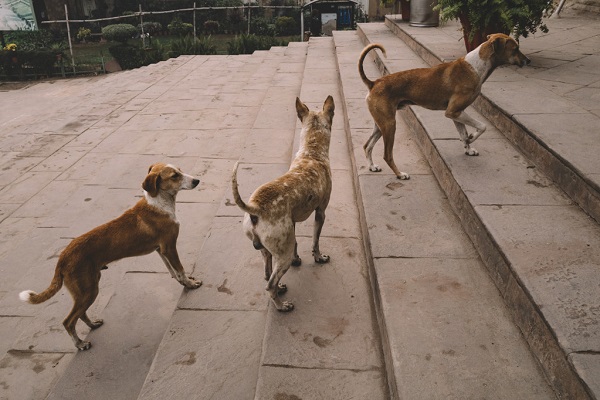In an immediate and concerning move to curb illegal dog fights and reduce dog attacks, the central government, on March 12, proposed a nationwide ban on licensing, breeding, and selling twenty-three ferocious and aggressive dog breeds. This proposal has been accepted with open arms by twenty-one prominent animal protection groups, marking a pivotal step towards enhancing animal welfare and public safety in India.
The motion was adopted after the Delhi court was moved by a PIL to ban these aggressive dogs post-due consultancy with the stakeholders. The proposal was recommended by the expert committee headed by Dr. O.P. Chaudhary, joint secretary of the Animal Husbandry Department. Post-presentation, the ministry invited public comments and feedback on May 2.
While the proposed ban on aggressive dog breeds in India has good intentions, a more effective solution lies in a combination of responsible owner education, breed-specific regulations, stray dog management, and public awareness campaigns.
Animal protection groups, including People for the Ethical Treatment of Animals (PETA), the Federation of Indian Animal Protection Organisations (FIAPO), and others, have endorsed the proposed measures. The emphasis on banning these breeds was more focused on safeguarding these in-peril canines, which are often traded without adequate warnings about their fluctuating aggressive tendencies and their exploitation in illicit dogfights.
Shaurya Agrawal, Advocacy Associate at PETA India, articulated a crucial perspective on the government’s recent proposal: “The central government’s proposal aims to stop Pit Bull-type breeds from being subjected to the horrors of illegal dogfights and protect citizens from being attacked by dogs’ bred to be unstoppable weapons.” This dual-purpose approach underscores the urgent need to address animal welfare and public safety concerns.
The rationale behind these bans is crystal clear. There have been numerous attacks on humans by these powerful dogs, instilling fear and highlighting the need for regulation. Recent incidents include critical injuries sustained by a Prantiya Rakshak Dal Jawan in Baraut and a 5-year-old girl in Chennai, attacked by Pitbull and Rottweiler, respectively. Reports such as those are also received from all over the country, including Ghaziabad, Delhi, and Lucknow. These alarming incidents are enough to instill fear and highlight the potential dangers associated with these powerful breeds.
Though the proposal has garnered significant support from numerous animal protection groups, it has also faced setbacks. Within a week of the order’s issuance, the Karnataka High Court put a stay on the circular. It argued that the central government could not impose a blanket ban on dog breeds through a circular without such power under the Prevention of Cruelty to Animals Act, 1960, or the Animal Birth Control (ABC) Rules.
Justice M. Nagaprasanna granted the stay in response to a petition filed by Bengaluru residents King Solomon David and Mardona Jones. Notably, the Kennel Club of India, the nation’s primary certifying body, had not been consulted in decision-making. Consequently, the court summoned the documents that formed the basis for the ban to scrutinize the consultation process.
The depiction of these foreign dog breeds in India is often associated with fear and taboo, usually stemming from three main issues:
- Media portrayals often depict these dogs as inherently dangerous without full context, fostering public fear and misunderstanding.
- Illegal and irresponsible breeding practices have increased, with breeders prioritizing profit over animal welfare. This leads to poorly socialized dogs with unpredictable temperaments.
- A small group of pet owners fails to properly train and socialize these breeds, reinforcing negative stereotypes.
The central government’s proposal to ban certain aggressive dog breeds is a significant step toward preventing illegal breeding and irresponsible ownership. However, more measures are needed for effective results. For instance, despite sterilizing nearly 5,500 stray dogs in eighteen months, the dog bite rates in Chandigarh have almost doubled vis-a-vis a year before, reaching ten thousand attacks per year, as reported by the Tribune. This indicates that sterilization alone is insufficient in addressing the problem.
A study by Mikkola et al. reveals that ferocity and aggressiveness in dogs are influenced by environmental and behavioral factors. Factors such as age, sex, size, familiarity with other dogs, training methods, and circumstances that provoke aggression all contribute to a dog’s behavior.
Drawing a parallel with how mentally ill individuals convicted of crimes receive different considerations due to their mental state, dogs’ aggressive behaviors should also be viewed in context. Mistreatment, size, abandonment, and fearfulness significantly impact a dog’s aggression levels.
Smaller dogs, which often display more ferocious tendencies, are not included in the ban. Moreover, breeds like the Staffordshire Bull Terrier, restricted in countries like Ireland, were not found to be among the most aggressive in the Mikkola study. This suggests that the training and environment these dogs are exposed to are more decisive in their behavior than their breed alone.
While the government’s proposal aims to enhance public safety and curb illegal breeding, its potential to reduce dog attack incidents remains uncertain. While comprehensive enforcement could decrease dog fights, it might inadvertently lead to increased abandonment and even euthanasia by owners of banned breeds. Moreover, focusing solely on specific breeds overlooks the enormous challenge posed by India’s extensive stray dog population, which is estimated to be between 35 and 65 million. This population faces risks due to neglect and environmental factors such as improper waste management.
In conclusion, tackling dog aggression and welfare demands a balanced and multifaceted strategy. Educating owners on responsible care and training is key. Instead of bans, enforce laws that require training and certification for such aggressive breeds. Only allow strong guard dogs to people who need them for farming purposes. Spread awareness through fun campaigns to bust myths about negative dog behavior. And, of course, let’s give our furry friends a paw-sitive future by supporting animal welfare groups. Together, we can fetch better lives for dogs everywhere!

 DogExpress
DogExpress



















 in Chandigarh, India.
in Chandigarh, India. 
